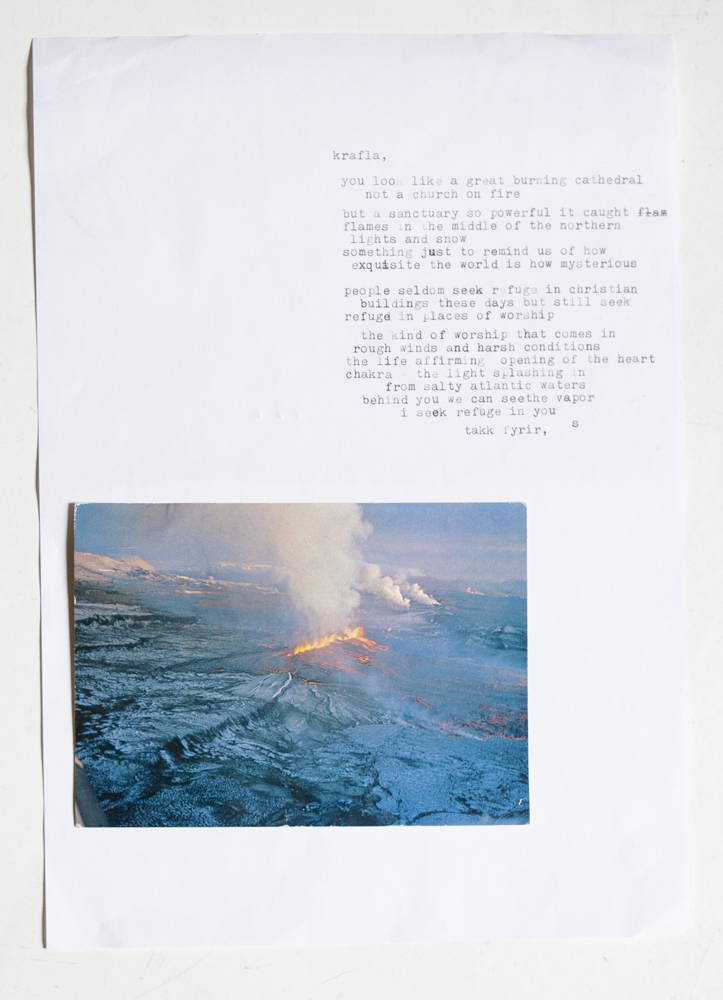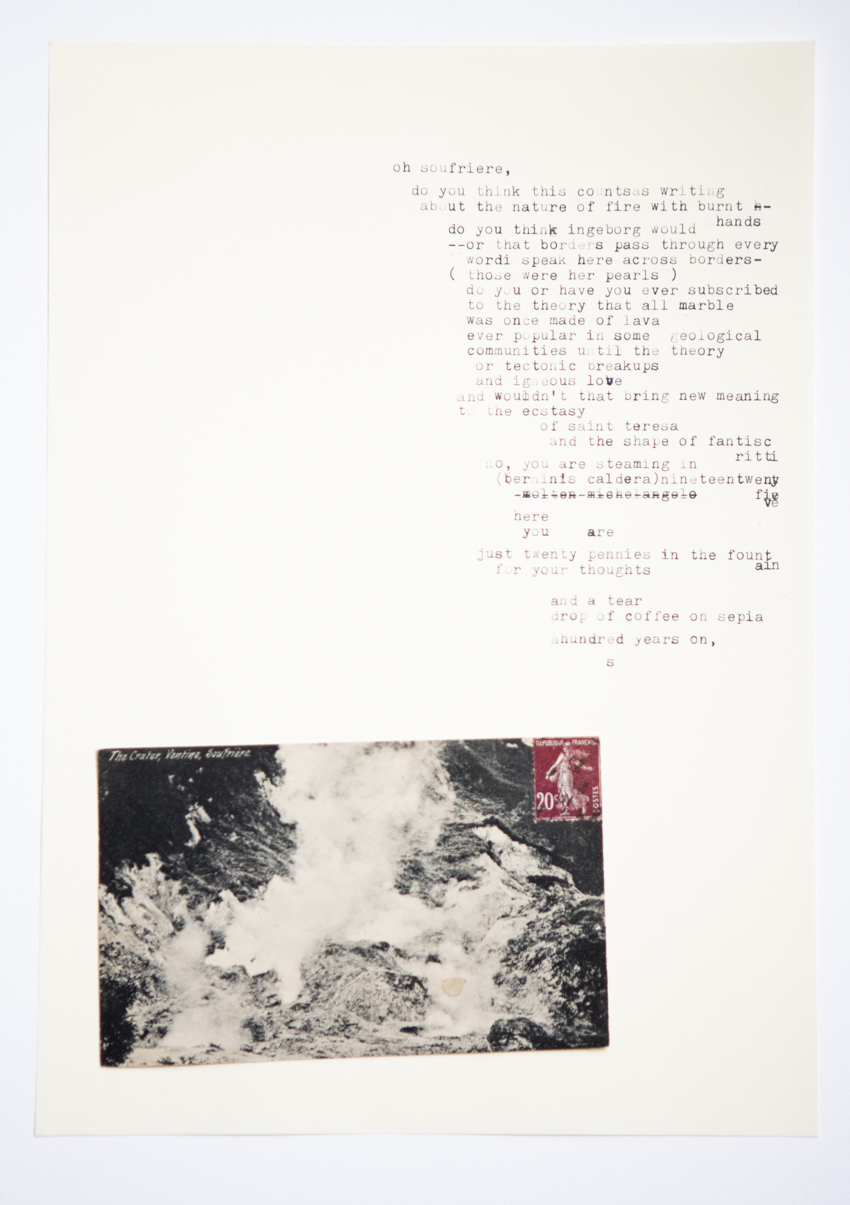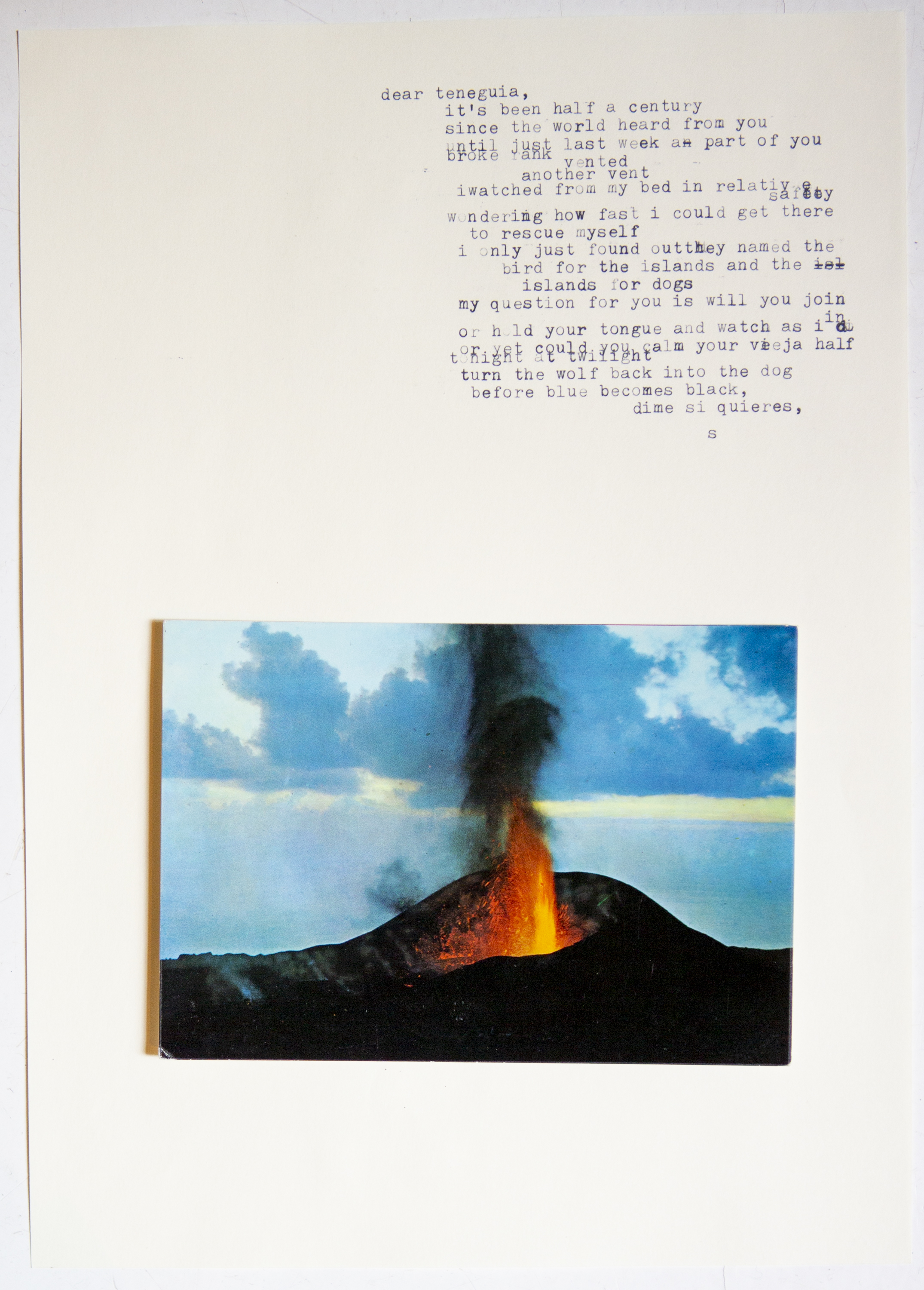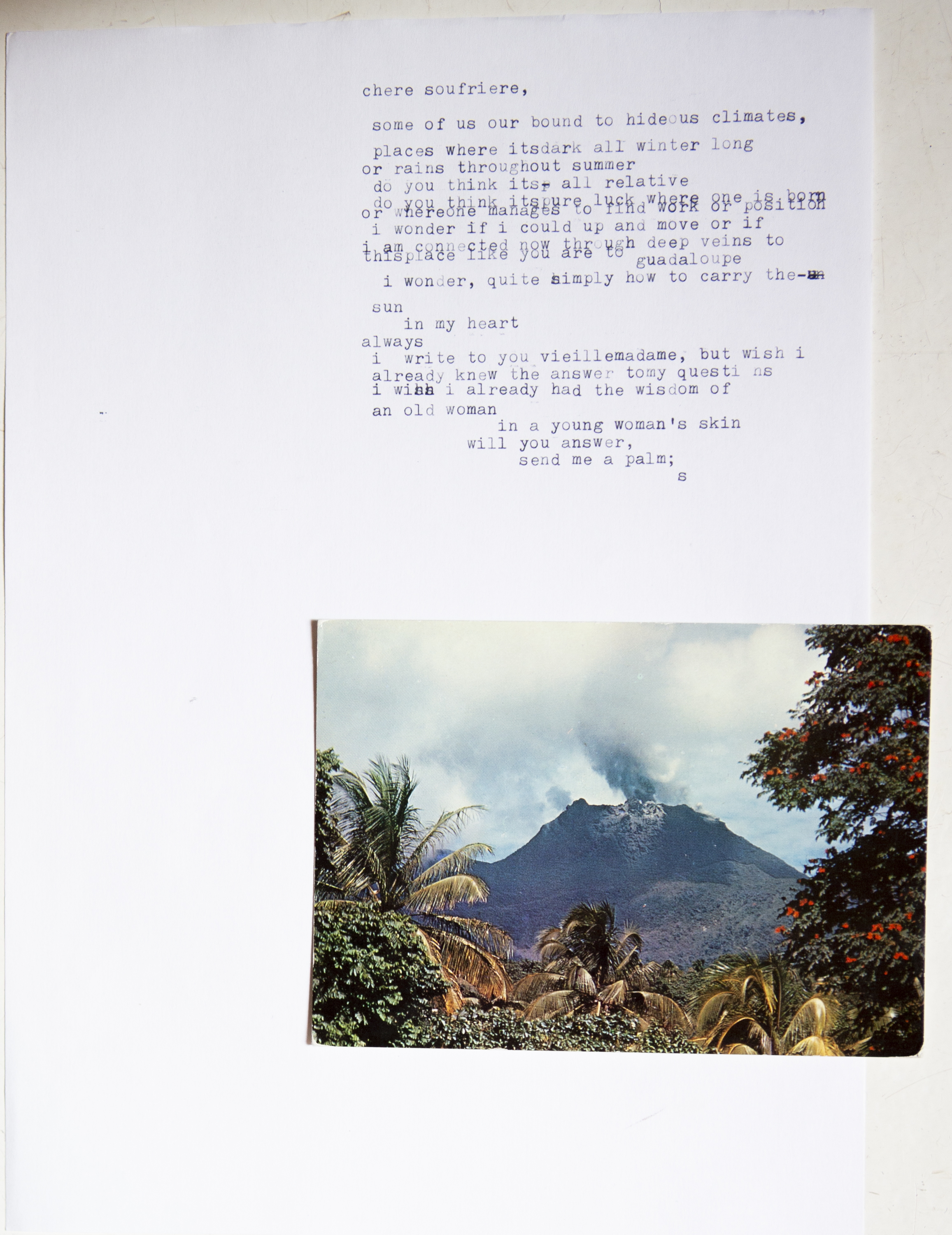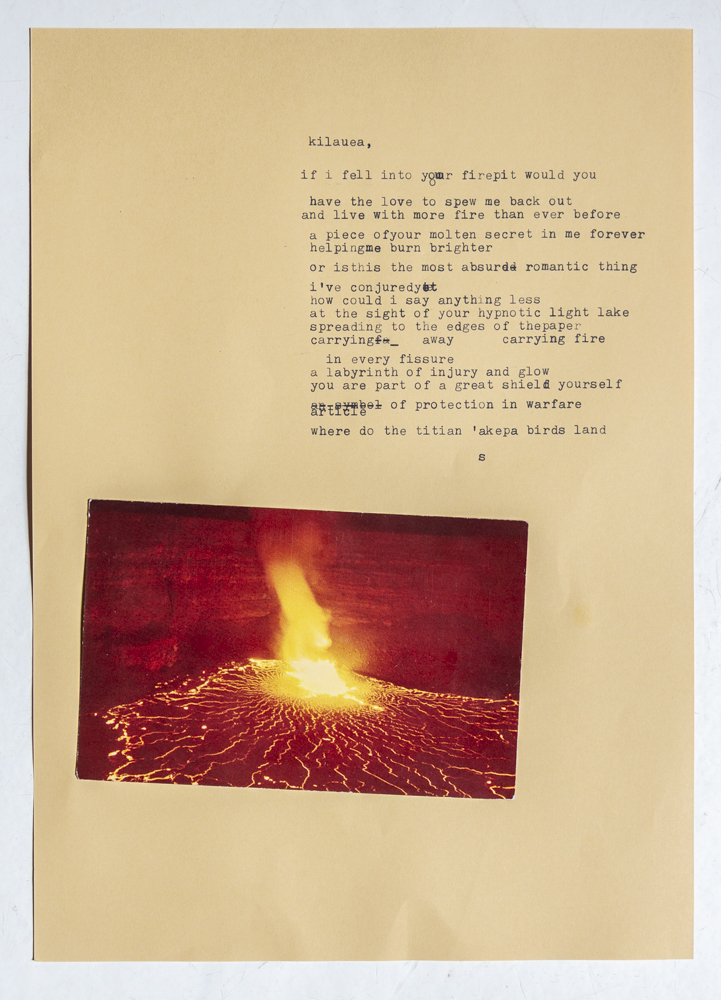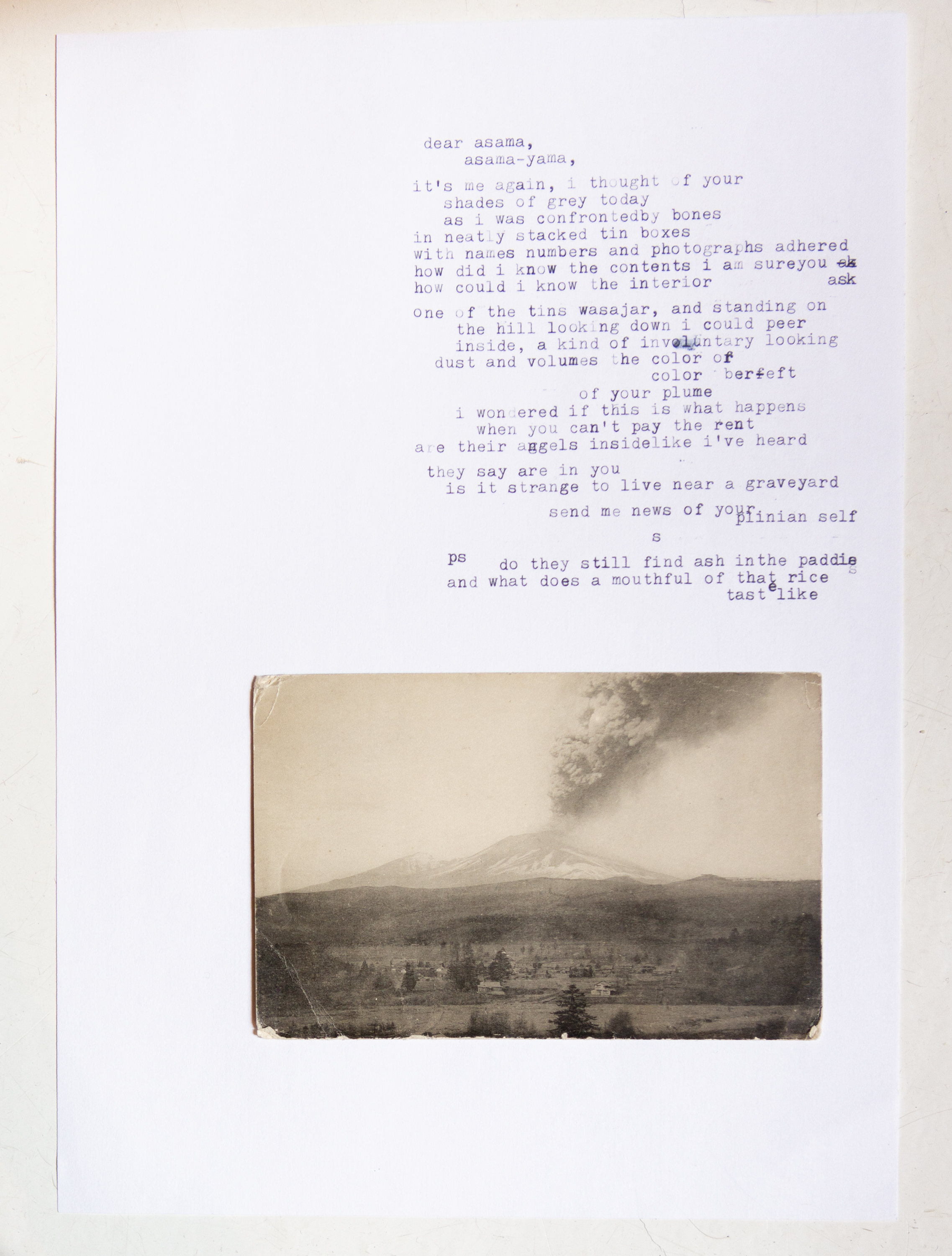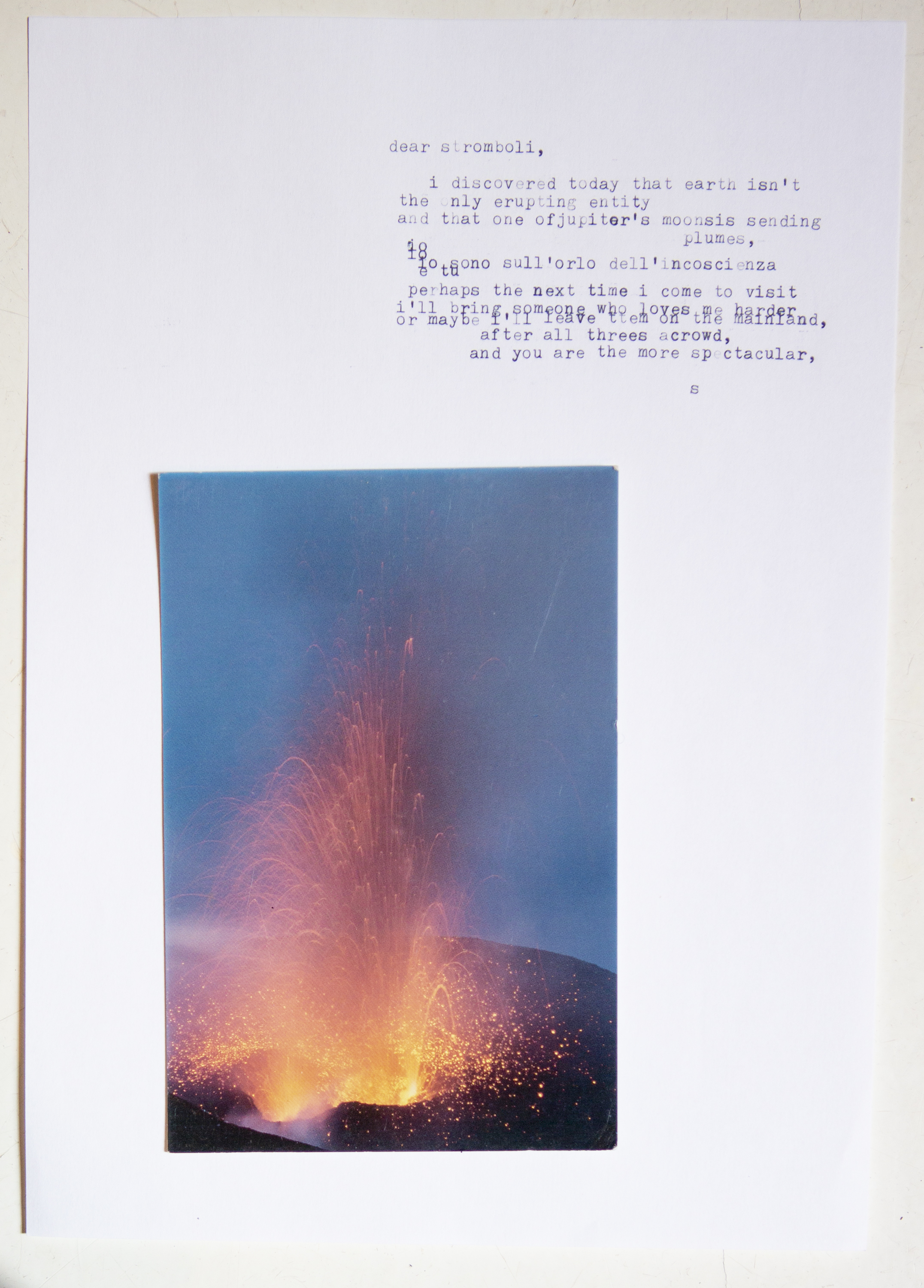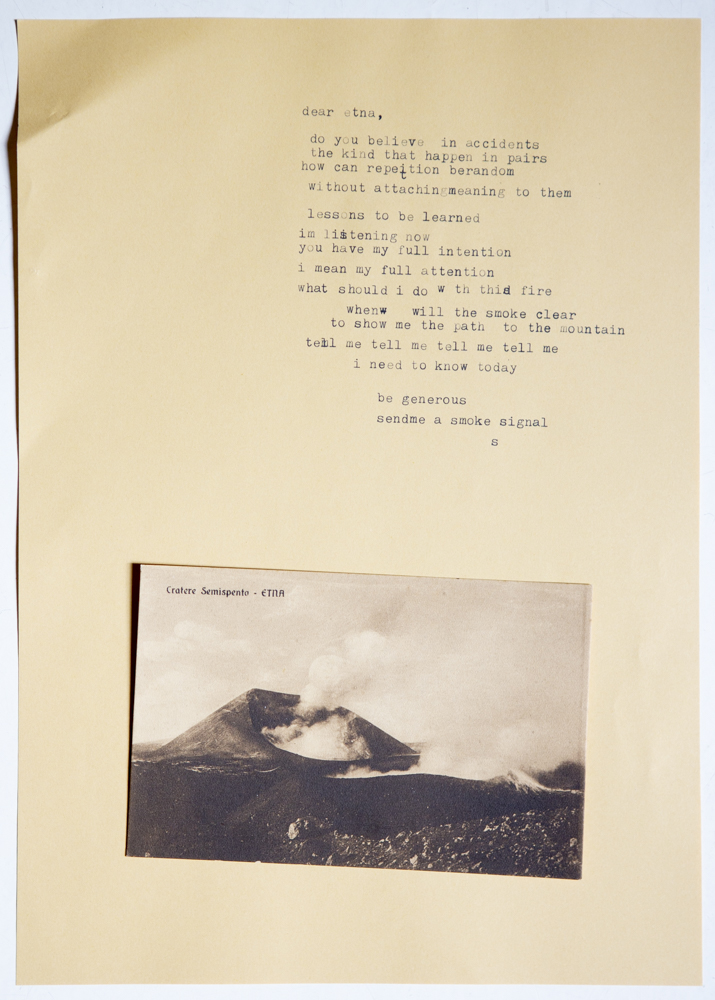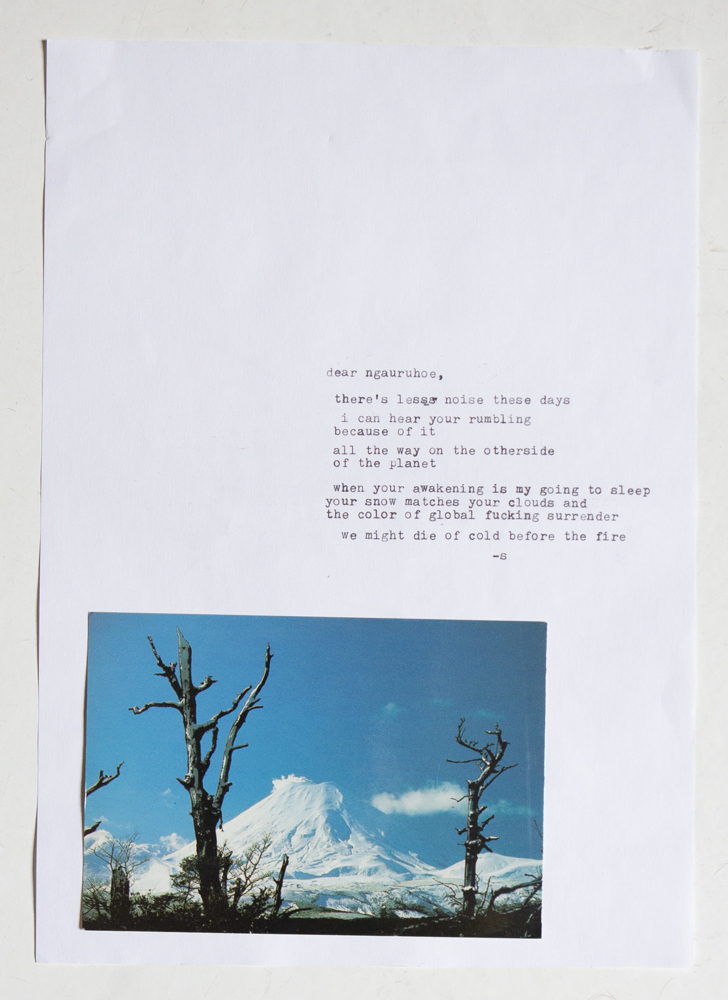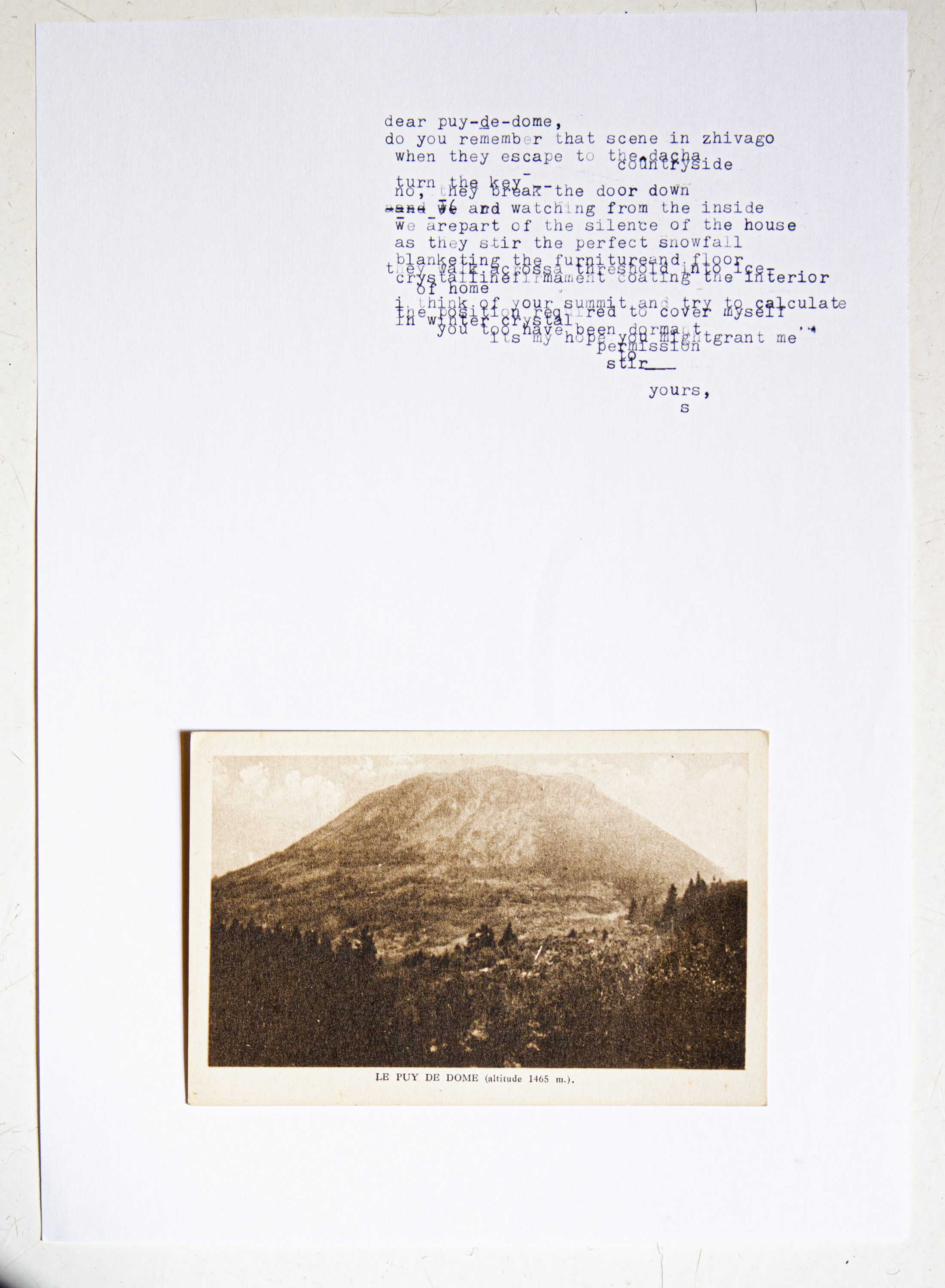Postcards to Volcanoes, 2020-2022

The expressions of distance and closeness and a sense of ritual are most clearly seen in the work of Mirlesse. Postcards to Volcanoes (2020–22) expresses a relationship to the most resonant of natural forces, the eternal entity of the volcano. It is the giver of life – a force so powerful that it created planets – but it also has the power to end life. Its unpredictability is what makes it so mighty, so attractive, so worshipped by many around the world. It literally makes new earth with its ash and lava. During the pandemic, when the world seemed to be falling to pieces and structure fell away from our daily existence,
Mirlesse created her own form of daily ritual by writing intimate
postcards to volcanoes. By doing so, she calls to them each day from inside her home knowing she will never get a reply. The work juxtaposes a postcard of a volcano with a type-written script addressed to it. The personification of the land as illustrated by a postcard (or icon) and the writing is a projection that holds potential far beyond our tangible understanding of images and the supposed clarity of words. Her words, and connection with the volcano make the viewer aware of the precarity of living, and conversely, the vastness of being. Each piece of writing asks questions, talks candidly, and seeks reassurance regarding something greatly more significant than oneself – just as prayers often do.
But the messages are also quite playful. Mirlesse explains that her relationship to the volcano is less respectful than to a god. Her voice is tutoyer versus vouvoyer, as in the French language.(9) This is much more in line with the traditional use of a postcard, which is often instantaneous, friendly and to the point. The back of the postcard has long been ignored in favour of the image depicted, and as the historian David Vincent has observed, ‘Because of their role as a photographic record of a vanishing world they have been collected for their unwritten side. Historians have yet to turn them over’.(10) Mirlesse affords both sides equal reverence and gave herself rules with which to work by, writing every day in one sitting. It is these rules and the forming of a ritual that elevates the communication into something more profound and meaningful. The ritual allowed her the space in which to connect with her deepest thoughts and feelings on the most extreme of occasions, and although not explicitly spelled out, perhaps also her highest hopes and most debilitating fears. This is the importance of ritual for both an individual and a community, and it is for this reason that the postcards resonate so deeply, in a way a one-off note could not.
The texts had to be concise enough to fit on the paper and she had to work around the misfunctions of the old typewriter, which favoured the right. The postcards become so much more than a ‘souvenir’ or stand-in for the receiver and instead enable a multifaceted reading of the image as a personal, but also a social object. There are no real endings with these messages – they are more generative – the process of writing one was repeated for a total of 120 times. But like a postcard they are also a ‘I am here’ and in many cases a ‘Wish you were here’, albeit in a more poetic and personal manner. They are lyrical and beautiful, and in another context could be understood as poems, where spontaneous and intimate words create a palpable sense of proximity. It is tempting to think of them as love letters, but I don’t think they are that; instead, I read them as a token to the absent ‘other’, often filled with longing.
And she left them alone with the one remaining fraction of all the wisdom and knowledge, all the secrets and undiscovered beauties, that had once been in the world: to make what lasting good of it they could, and to treasure what was left as best they might.(11)
-Excerpt from “To Walk in the Image” essay by Susan Bright
